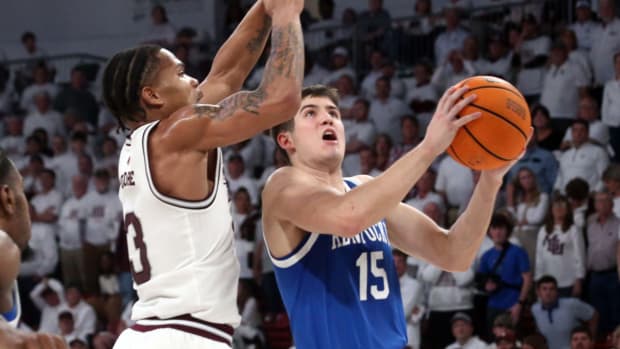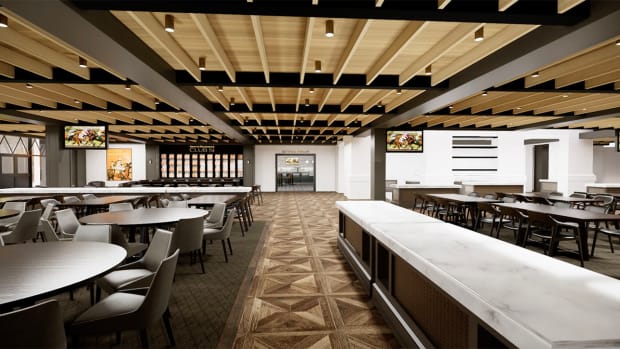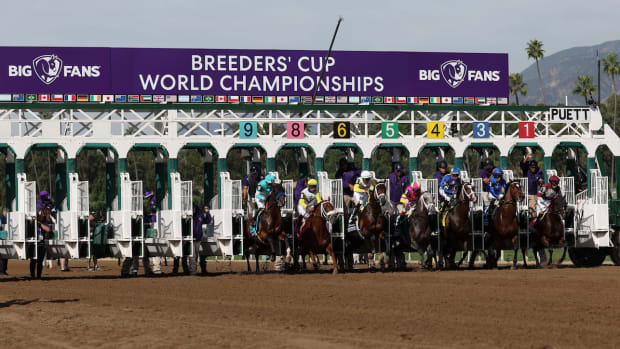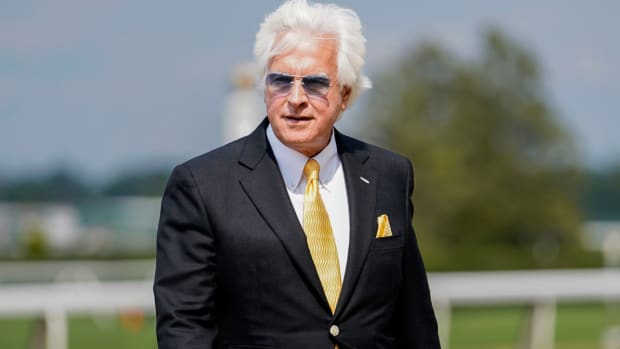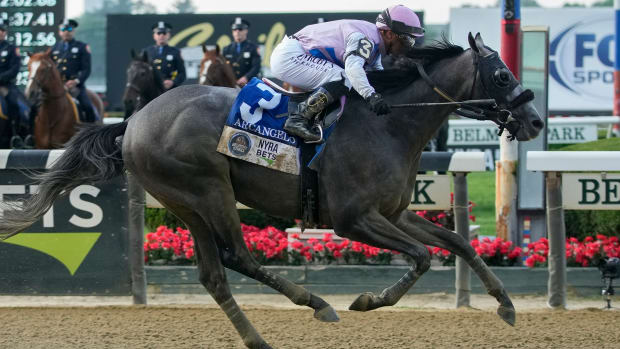The Biggest Gamble of the Kentucky Derby Could Be Allowing Fans at Churchill Downs
LOUISVILLE, Ky. — In September, the Kentucky Derby will be run for the 146th consecutive year. And, in a noteworthy development Thursday, for the 146th consecutive year there will be fans at Churchill Downs watching (and wagering on) the race. In the process, America’s most famous racetrack has set itself up as a flashpoint in our nation’s ongoing COVID-19 culture war.
Under a blue Louisville sky, Churchill president Kevin Flanery pulled off a mask and told a media gathering that the track plans to open its doors to tens of thousands of patrons on Sept. 5. The crowd will be much smaller than the usual 150,000-ish that cram the place on the first Saturday in May, but as of now they still might sell 50-75,000 tickets—including, remarkably, infield general admission passes. If it happens, this could be the largest collection of humanity in America in one place since the nation shut down in the face of a pandemic in March.
And this will be the Derby debate, a distillation of the same debate raging everywhere: staying home vs. mass gatherings; respect the virus vs. do what you want; care and concern vs. party in the USA; this is serious vs. this is overblown; blue vs. red. One of the great elements of sporting Americana is providing a timely window into America’s conflicted soul.
Expected questions: Does your mask match your hat? Do they come in seersucker? Will you bother with one at all?
The timing of the announcement was either a flourish of damn-the-torpedos bravado or a failure to read the room—or, perhaps more accurately, a failure to read the headlines. The day before, the United States recorded its highest number of COVID-19 cases yet, some 36,880 of them. Hospitalizations have surged in some hot-spot states.
Health experts nationally and internationally have been dismayed at the country’s seeming loss of interest in stopping the spread of a disease that has killed more than 120,000 people in America alone. Others shrug and say that the odds are in our favor when it comes to serious illness or death, so carry on.
The rest of the sports realm is moving far more cautiously when it comes to fans in the stands. The NBA, NHL and MLB will play without them—and without some of their own athletes, who have opted out. Same with professional golf and tennis. The NFL and college football are laying plans to play in front of reduced crowds, but will be white-knuckling it between now and kickoff.
Churchill? Let the turnstiles spin.
“We don’t fit into the mold of an arena or a golf course,” Flanery said. “That gives us flexibility.”
To be sure, Churchill is a huge edifice with the ability to (in theory) distance its patrons responsibly. The infield is 26 acres, and the rest of the property covers 190 more. Flanery touted 1.6 million square feet of space.
There are roughly 60,000 reserved seats in the clubhouse, almost all of which already have been purchased. (Some for the express purpose of re-selling, on what is traditionally a robust and chaotic secondary market.) Churchill officials are in the process of contacting those ticket holders to find out who intends to come, and who is staying home. The puzzle will be pieced together from there.
Sources told Sports Illustrated that the likely seating arrangement in the scores of box seats on the first and third floors is a checkerboard pattern—one box of six is full, the next box is empty, and so on. The real question will be who gets the prized third-floor boxes near the finish line, and which of those box owners are moved to create space.
Worth keeping in mind with the box seats and swankier areas of Churchill: many of those ticket holders skew older. Some of them much older. What is their appetite for taking on a huge crowd in a loosely controlled setting?

A general view of fans in the infield during the 145th running of the Kentucky Derby at Churchill Downs.
Jamie Rhodes-USA TODAY Sports
The other 90,000-100,000 Derby patrons in a normal year are general admission buyers. Even cutting that number in half or more presents a scenario that would have Dr. Fauci rolling his eyes. In opening up the infield, Churchill is basically inviting a scene that might not be too different from the infamous Lake of the Ozarks party over Memorial Day weekend. Social distancing may be requested, but good luck enforcing it with a crowd that tends to be young and impulsive and highly inebriated.
Churchill said patrons are encouraged to wear masks, but they won’t be required. Don’t expect to see many. Drinking, eating and smoking cigars—three tried-and-true Derby activities—aren’t done with masks on. Unmasked trips to the betting windows also invite problems in terms of distancing in line and bellowing bets into the faces of mutuel clerks. (Toward that end, Flanery said gamblers will be encouraged to bet online via their phones, and the track is in the process of beefing up a wifi network that invariably bogs down on days when more than 100,000 people are at the track.)
All these plans are being laid within the context of a virus that is spiraling back out of control in America. While the numbers are low in Kentucky (fewer than 15,000 cases and 564 deaths, as of Thursday morning), much of a typical Derby crowd arrives from out of state. Transporting them in, bringing them together in numbers of 50,000 or more and then dispersing again is asking for a spike. Hopefully it won’t be a fatal one.
The Derby is set up to be the climax of an ambitious, return-to-sports week in Kentucky. On Wednesday, Sept. 2, Louisville is scheduled to open its football season (with an undetermined number of fans in the stadium) against North Carolina State. On Thursday, Sept. 3, Kentucky opens its season (with same fan situation) against Eastern Michigan. Friday, Sept. 4, will be the second-biggest racing day of the year at Churchill, the Kentucky Oaks, and you better believe they’ll sell tickets to that as well. Then that Saturday will be an event that is of undeniable cultural and economic significance to the commonwealth.
Will it all happen? As of late June, everything is a go. Will it be a health disaster? Or a step back toward normalcy? Check back in October.
This much we know: At a bottom-line sporting shrine that was built and sustained and expanded by betting, this may be Churchill Downs’ biggest gamble of all.

